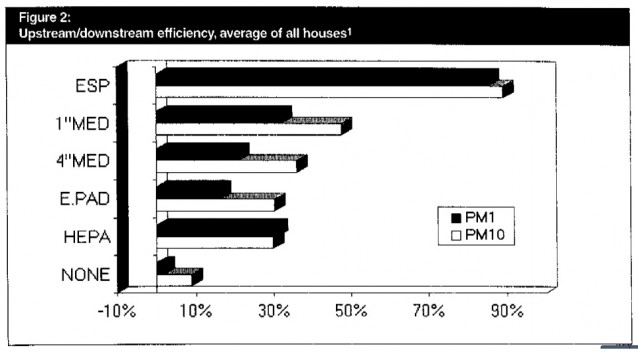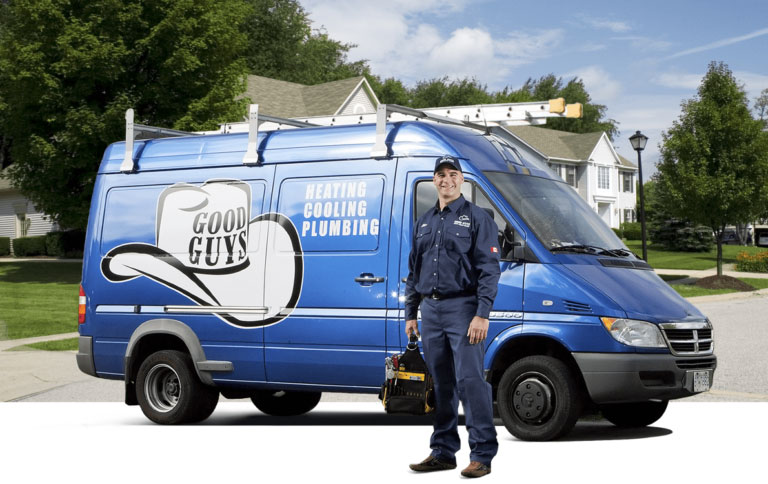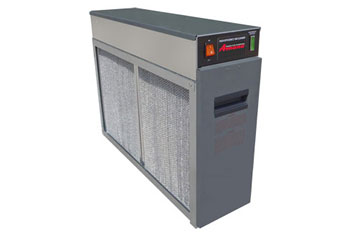When electronic air cleaners (EACs) started to become popular about 15 years ago, they were hailed as a highly effective and economical way to clean indoor air. However, more recently, they have been criticized for their production of ozone (a lung irritant) and because they require regular cleaning (which many homeowners do improperly or not at all). For these reasons, most major heating & air conditioning manufacturers have stopped promoting them, and switched back to high efficiency media filters. But some still believe EACs are a good solution due to their overall effectiveness and relatively low maintenance costs.

Tabletop vs Whole-House EACs
A well known vacuum cleaner company has been promoting a tabletop EAC using TV infomercials. However, for homes with ductwork, we recommend EACs that hook up to your furnace, as they can provide whole-house air cleaning with only a single system.
An electronic air cleaner usually works in 4 stages:
1) A pre-filter removes large particles. These are usually made of a steel mesh, and can easily be cleaned under running water.
2) An ionizer gives the remaining smaller particles a negative charge.
3) The particles are collected on positively charged plates.
4) An activated charcoal filter removes odours and VOCs (volatile organic compounds). Many odour-causing molecules and other harmful compounds are too small to be removed by any filtration system, except for activated charcoal filters, which capture many of these compounds. This is the only part of the system that requires regular (usually annual) replacement, although it is optional.

Effectiveness
An EAC can capture most particles as small as 0.1 microns (1/250,000 inch, smaller than most bacteria). A 1999 CMHC comparison of 10 different filter types found them to be highly effective, removing about 90% of particles. They were found to be the most effective, and were ranked #1 for value, because they can be used for many years without requiring replacement of any filters or other components (except for the odour-removing activated charcoal filters, as odours were not included in the study).

Ozone production
A study showed EACs to increase indoor ozone levels by 7-10 parts per billion (ppb) on average. This compares to the EPA’s 80 ppb standard for declaring a “bad air day”, so it may be the case that the overall cost effectiveness of EAC’s still makes them a good option. Indoor ozone levels with the EAC running were still usually lower than outdoor ozone levels. However, ozone considerations may lead homeowners who are especially concerned with air quality to opt for other filtration systems.
Cleaning
A more recent CMHC study showed that these filters must be cleaned regularly (as often as once a week) to keep them operating at top efficiency. You can see an EAC cleaning video here. Homeowners who are unable to regularly maintain the system should consider other filtration options.
To see other options for whole-house air purification, visit our whole-house air cleaners post. For information about installing an EAC or other air cleaner type, call 604 GOOD GUY (604 466 3489) or use our online form.



